14 Classic Military Knives That Still Hold Their Value
Collectors have long been drawn to the rugged beauty of traditional military knives. These weapons were made to last, and many of them continue to impress with their strength and design. From World War favorites to post-war classics, each one carries a story that connects the past to the present.
This post may contain affiliate links, which helps keep this content free. Please read our disclosure for more info.
Ka-Bar USMC Fighting Knife
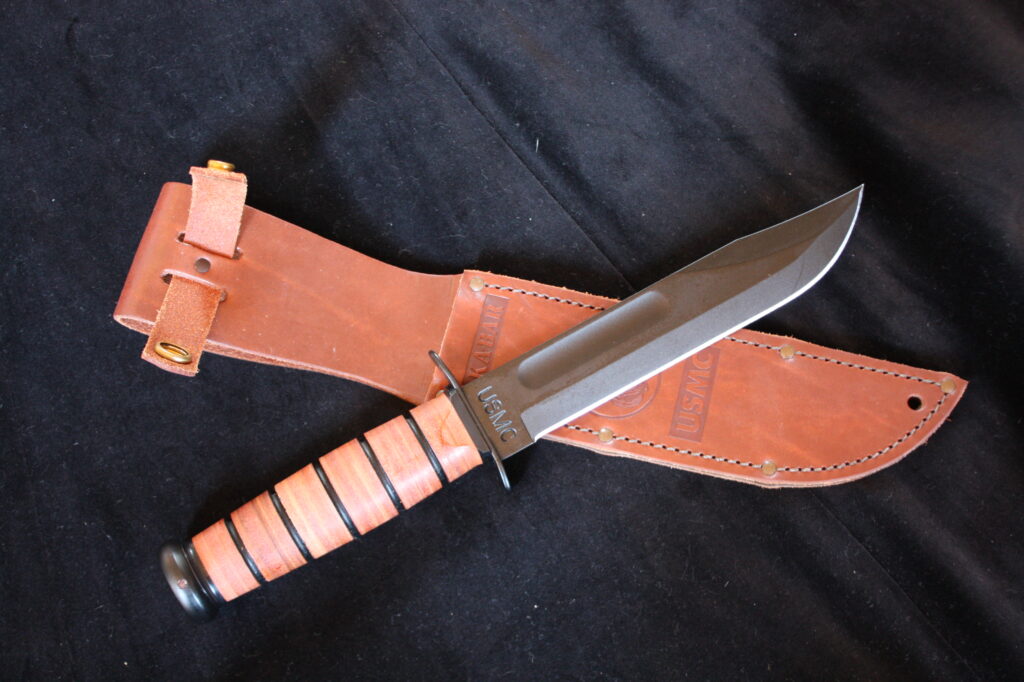
The Ka-Bar USMC Fighting Knife was first issued during World War II in 1942 and quickly became the standard combat knife for American Marines. It was primarily used for hand-to-hand combat, utility work, and survival situations in the field. The knife features a 7-inch carbon steel blade and a leather handle that provides excellent grip under pressure. Today, original wartime versions are highly collectible, with market values ranging from $250 to $600 depending on condition and markings. Modern reproductions are still made and remain a popular choice for military enthusiasts and outdoor adventurers.
Collectors admire how the Ka-Bar represents both strength and simplicity in design. Its black blade finish and sturdy construction have become an enduring symbol of U.S. military toughness. Many original knives bear USMC engravings that add to their historical charm. The knife’s durability has allowed many to survive in remarkable condition even after decades. As a result, the Ka-Bar remains one of the most recognizable and respected combat knives worldwide.
Fairbairn-Sykes Fighting Knife
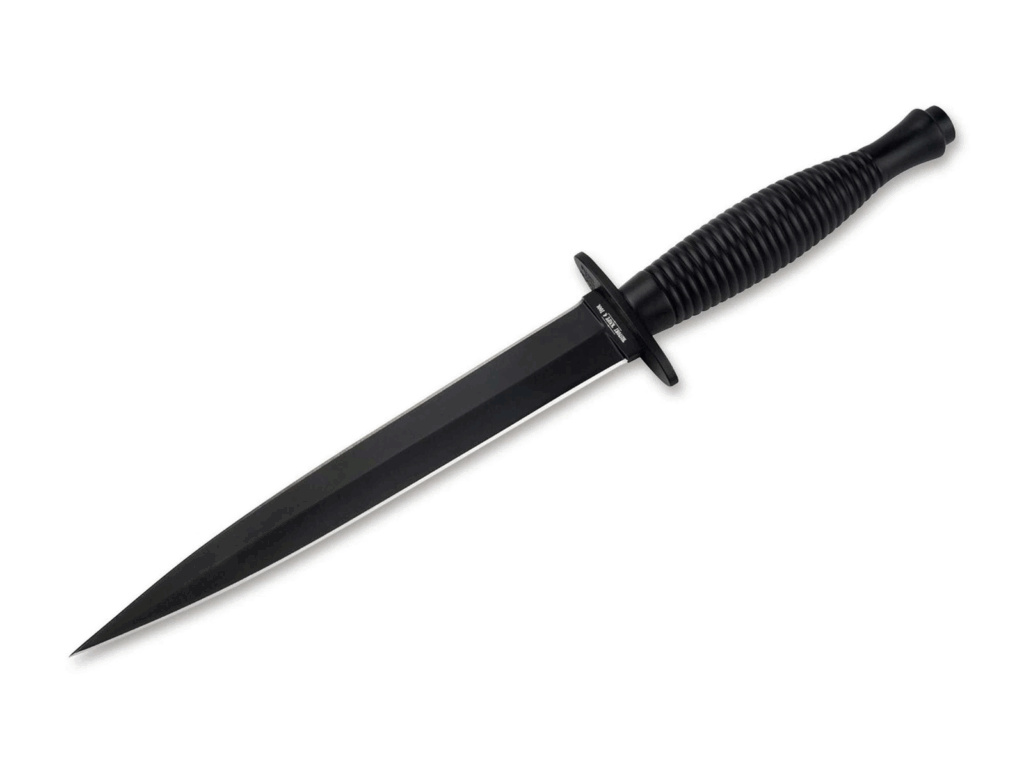
Introduced in 1941 by British commandos, the Fairbairn-Sykes Fighting Knife became a defining weapon for special forces during World War II. It was designed for stealth attacks and close-quarters combat, featuring a double-edged blade with a slim, tapered point. Its balanced shape made it efficient for thrusting motions, favored by paratroopers and commandos. Depending on authenticity and condition, original examples can fetch between $400 and $1,200 at auctions. Many collectors value it for its sleek appearance and deep wartime roots.
Beyond combat use, the knife gained iconic status among elite military units. The design inspired later dagger models used by modern forces worldwide. Brass handles and distinctive crossguards make early versions especially sought after. Some Fairbairn-Sykes knives bear unit markings that greatly increase their collector value. Even after decades, its design remains admired for its precision and grace in military history.
M3 Trench Knife
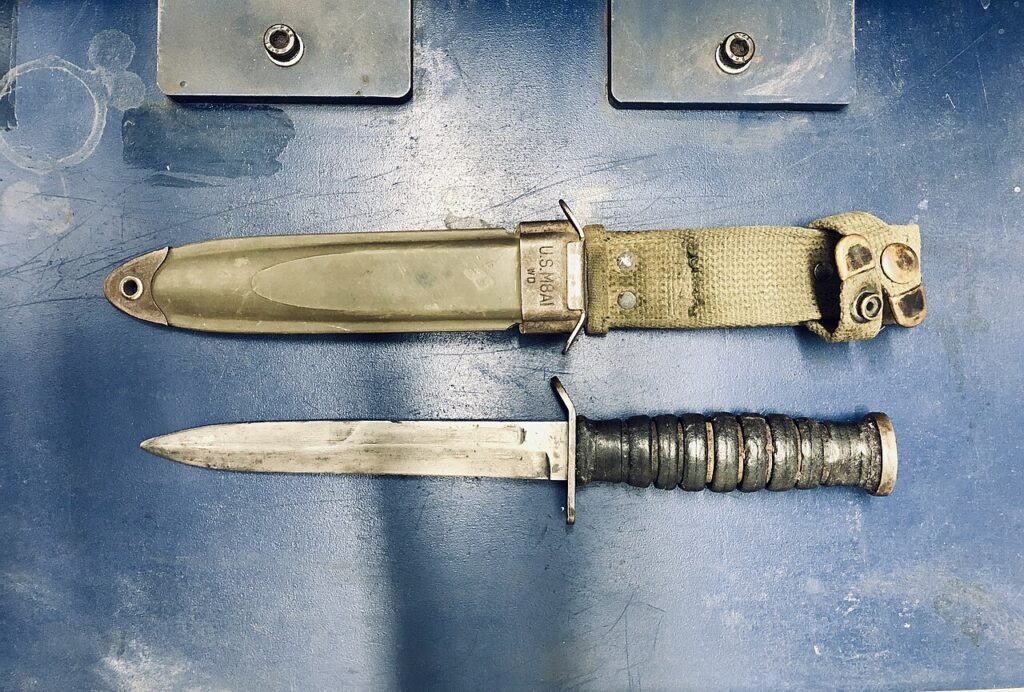
The M3 Trench Knife was introduced in 1943 for U.S. Army soldiers who lacked bayonets during World War II. Designed as both a fighting and utility knife, it featured a double-edged spear-point blade ideal for close combat. Its stacked leather handle provided a firm grip even in muddy conditions. Early versions made by manufacturers like Case or Camillus now command prices between $300 and $700. The knife’s practical design kept it in military service long after the war ended.
Collectors appreciate the M3’s authentic wartime craftsmanship and functional design. Many examples come with leather scabbards stamped with US M6, adding historical value. Some soldiers customized their knives by sharpening the edges or carving initials into the handle. Due to limited wartime production, marked originals have become prized finds. Its rugged yet refined look continues to appeal to both collectors and historians.
Randall Model 1 All-Purpose Fighting Knife
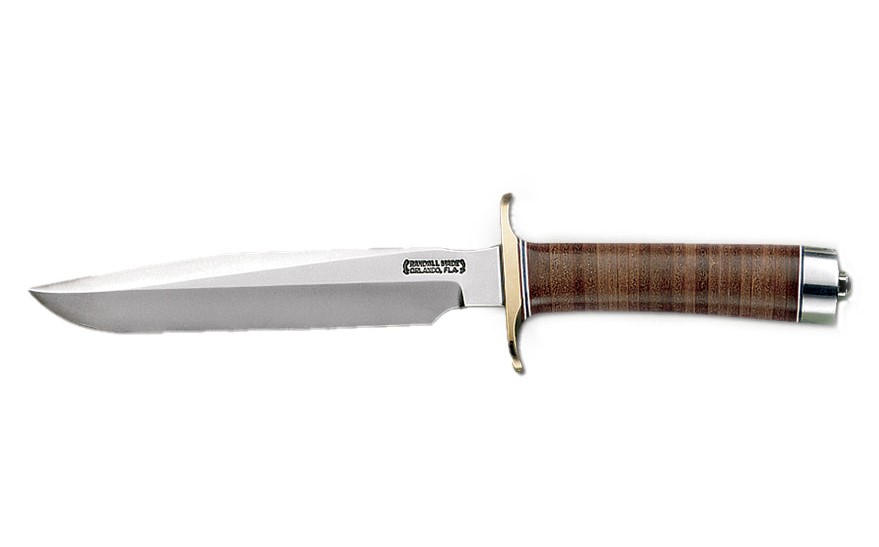
The Randall Model 1 was introduced in the early 1940s and became one of the most respected combat knives used by American troops. Handmade by Bo Randall in Florida, it was designed for durability and dependability in all conditions. With a 7-inch stainless steel blade and a leather handle, it offered both function and style. Original wartime versions can sell for $800 to $2,000 depending on provenance and markings. This knife continues to be produced by Randall Made Knives and remains a collector favorite.
Each Randall Model 1 carries the mark of expert craftsmanship and field-tested quality. It was favored by pilots, soldiers, and even explorers for its reliability. Many examples were customized with different handle materials like stag horn or micarta. Wartime models with serial numbers or military engravings are especially valuable. Collectors see it as both a weapon and a piece of American knife-making history.
V-42 Stiletto
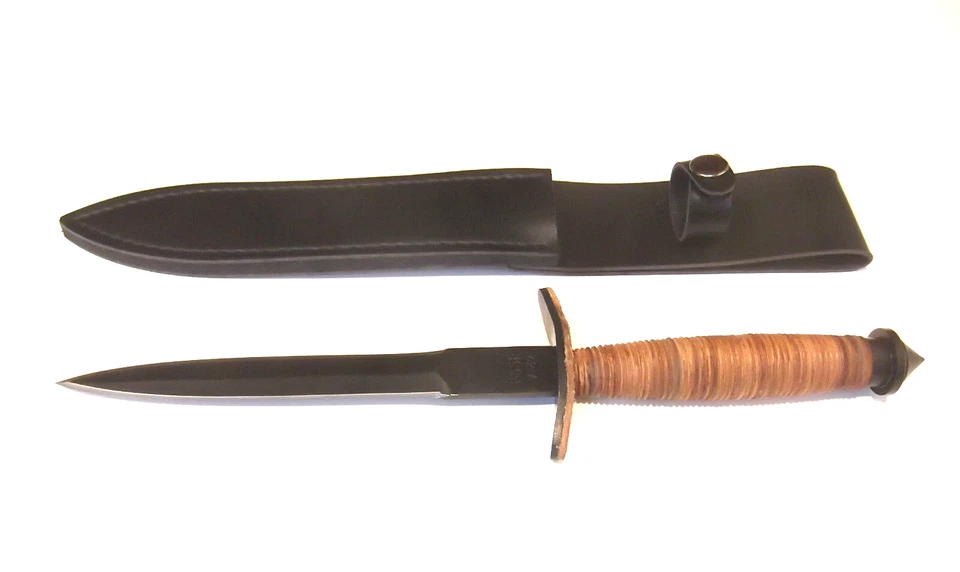
The V-42 Stiletto was issued to the First Special Service Force during World War II, known as the Devil’s Brigade. It featured a narrow double-edged blade ideal for quick and precise strikes. The knife’s leather handle and pointed pommel were designed for both combat and field use. Genuine examples are rare and can range in price from $1,000 to $2,500. Its distinctive shape has influenced many later special forces knives.
This knife holds deep historical significance among military collectors. Its association with elite commando units adds to its appeal and rarity. The handle often bears the FSSF insignia, increasing its collectible value. Many surviving examples are preserved in museums or private collections. The V-42 remains a tribute to specialized training and elite warfare tactics.
Mark 2 Navy Knife

Developed during World War II, the Mark 2 Navy Knife was the U.S. Navy’s answer to the Marine Corps Ka-Bar. It had a 7-inch clip-point blade designed for combat and general utility aboard ships. The knife’s stacked leather handle provided excellent control even in wet conditions. Wartime originals can sell for $300 to $700 depending on manufacturer and markings. Reproductions remain in circulation and are popular among outdoor survivalists.
Collectors often note the Mark 2’s close resemblance to the Ka-Bar, though it features slight differences in pommel and blade design. Many were produced by companies like Camillus and PAL, each with unique stamp variations. Its navy designation and solid build make it desirable for both military and knife history enthusiasts. The knife’s versatility kept it in service well after the war. Even decades later, it stands as a dependable symbol of U.S. naval heritage.
Gerber Mark II Combat Knife
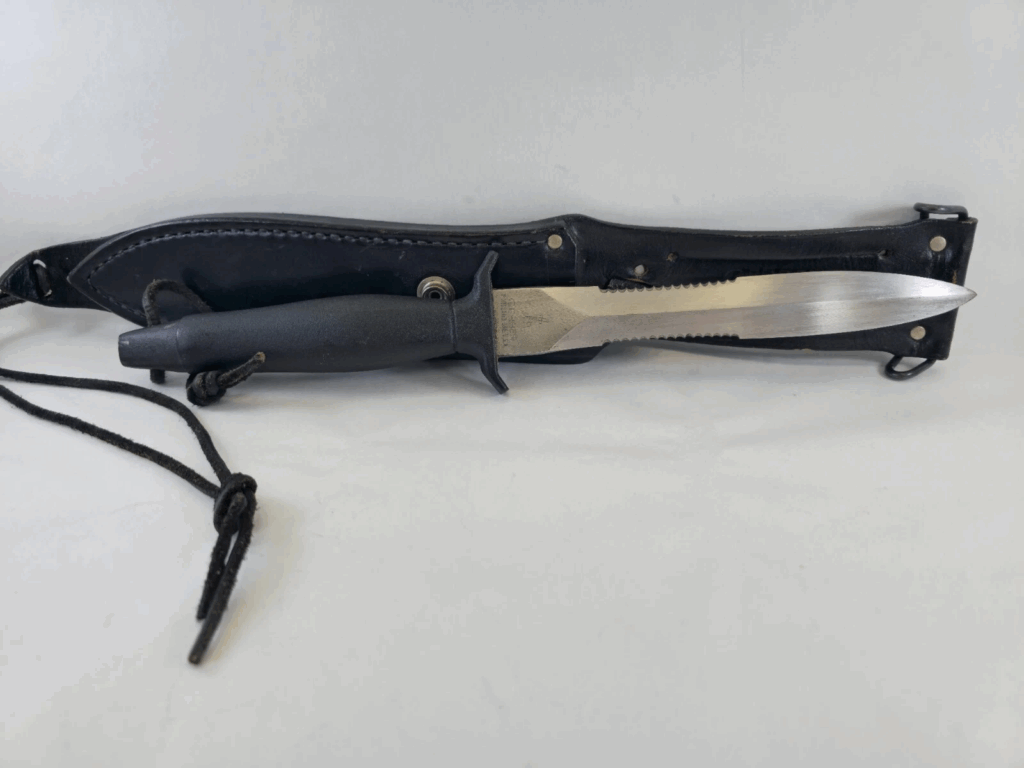
Introduced in 1966 during the Vietnam War, the Gerber Mark II became a trusted companion for American soldiers. Its double-edged blade and ergonomic handle design made it suitable for self-defense and survival. The knife’s black oxide finish gave it a stealthy look favored by special operations units. Depending on its serial number and production year, original versions range from $250 to $1,000. The Mark II remains one of the most recognizable postwar military knives.
Collectors admire its sleek design and association with Vietnam-era soldiers. Early models with the wasp-waist blade and aluminum grip are particularly valuable. Many soldiers personalized their knives, making each one unique. The Mark II’s ongoing production keeps its legacy alive among collectors and outdoor enthusiasts. It continues to symbolize reliability and strength under extreme conditions.
Buck 119 Special
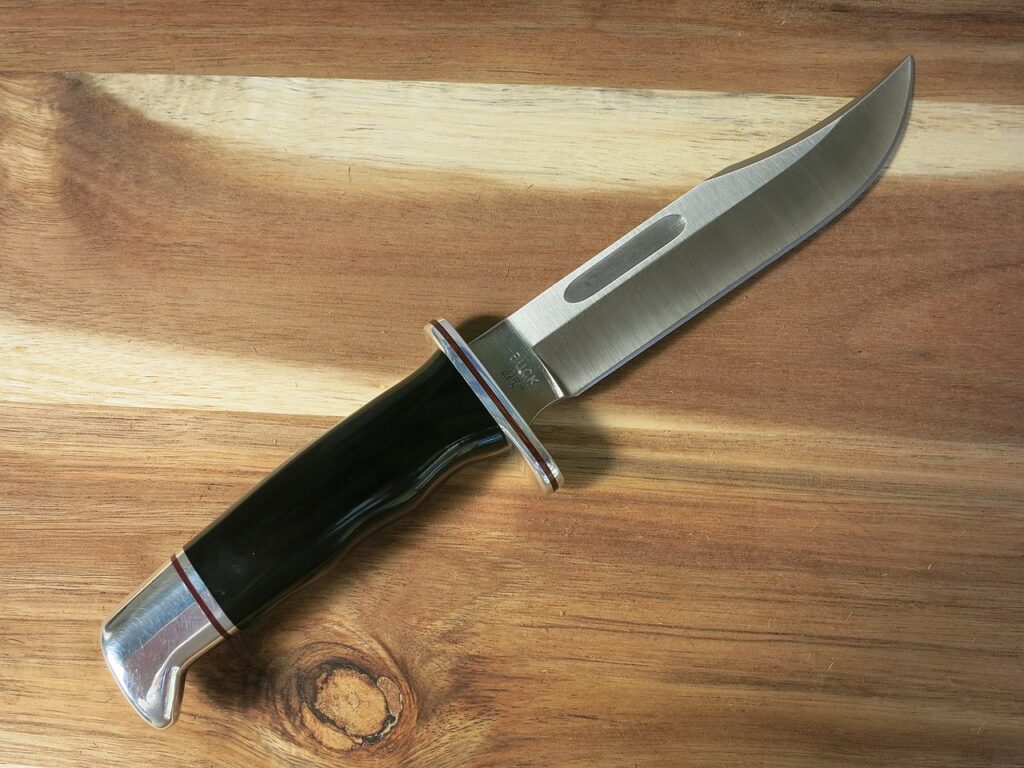
The Buck 119 Special was first released in 1942 and later became popular among soldiers and hunters alike. It was designed for heavy outdoor use, featuring a 6-inch clip-point blade and durable phenolic handle. While not an official combat issue, many service members used it during field operations. Vintage models with early tang stamps can sell between $150 and $500. The knife’s consistent production over decades shows its staying power.
Collectors appreciate the Buck 119 for its balance between military practicality and civilian appeal. It remains a go-to knife for survivalists and collectors who value classic American designs. The chrome-plated guard and pommel give it a distinct polished look. Some rare models come with leather sheaths embossed with the Buck logo, increasing their value. Its reliability and timeless appearance make it a staple in knife collections.
Camillus Jet Pilot Survival Knife

Issued to U.S. Air Force pilots in the 1950s, the Camillus Jet Pilot Knife served as both a survival and combat tool. It featured a 5-inch sawback blade designed for cutting through aircraft fuselage or wood. The knife also included a leather sheath with a sharpening stone pocket. Original Air Force-issued models can bring between $250 and $600 at auction. It became a vital piece of gear for pilots in survival training.
Collectors find the Camillus Jet Pilot Knife appealing due to its multifunctional design. The serrated back edge distinguishes it from other combat knives of its era. Variants produced by Ontario or Marble’s are equally sought after. Many knives bear U.S. Air Force markings that authenticate their history. It continues to hold collectible value as a practical and historical tool.
M9 Bayonet
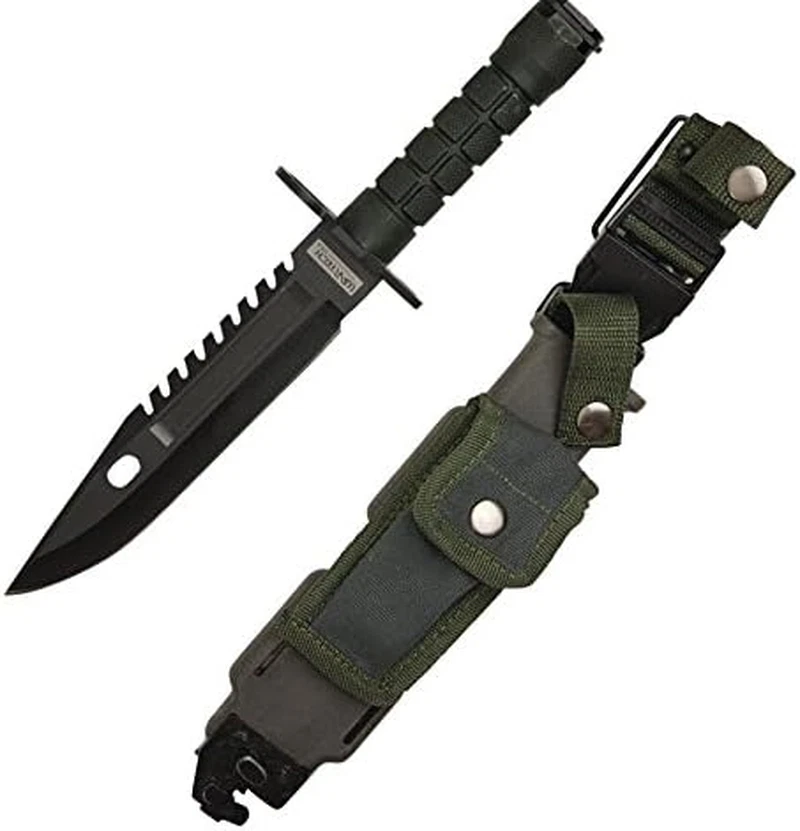
The M9 Bayonet was introduced in 1986 as a versatile attachment for the M16 rifle. Designed for both combat and fieldwork, it included a wire cutter and sawback blade. The polymer handle provided strong grip during tactical use. Authentic early versions made by Phrobis or Buck can fetch $300 to $800. It replaced earlier bayonets and remains in limited military use today.
Collectors recognize the M9 for its blend of weapon and tool functions. Some editions were issued with matching scabbards stamped with manufacturer logos. The knife’s adaptability for both fighting and field tasks adds to its enduring appeal. Variants made for testing or limited contracts are among the most expensive. Even modern-day reproductions are admired for their practicality and design.
Ontario M7 Bayonet
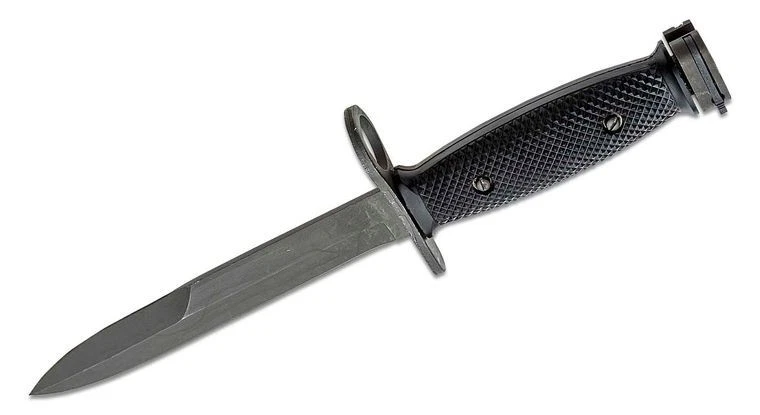
The Ontario M7 Bayonet entered service in the 1960s and was primarily used with the M16 rifle. Its spear-point blade and durable plastic handle made it effective for both combat and utility work. It came with a hard plastic scabbard designed for easy attachment to web belts. Depending on production year and manufacturer, authentic models are worth between $150 and $400. It was a staple piece of equipment for U.S. soldiers during the Vietnam War.
Collectors are drawn to the M7 for its practicality and solid construction. Some versions bear unique markings from different contract makers like Colt or Imperial. The knife’s continued use through the 1980s adds to its historical value. Many examples remain in good condition due to proper maintenance and limited use. The M7 remains one of the most affordable and collectible bayonets today.
Pilot Survival Knife by Ontario

Ontario’s Pilot Survival Knife was issued widely in the 1960s and became a standard piece of Air Force gear. Its 5-inch sawback blade made it practical for cutting through wood or metal. A leather handle and sturdy sheath made it ideal for tough conditions. Military-issued originals in good shape sell for $200 to $500. It was designed to provide both defense and survival capability to pilots stranded in hostile environments.
Collectors value its dual function and sturdy design. Many feature USAF engravings and government contract stamps that confirm authenticity. The built-in sharpening stone pouch adds practicality for field maintenance. It continues to see limited use among survivalists and outdoor collectors. This knife represents a true blend of utility and history.
MK3 Navy Knife

Introduced in the 1970s, the MK3 Navy Knife was designed for divers and sailors in need of a strong, corrosion-resistant blade. Its 6-inch stainless steel blade and sawback spine made it reliable in saltwater conditions. The knife was widely issued to the U.S. Navy and Coast Guard for multipurpose use. Authentic military-marked versions often sell between $200 and $450. Its practical design and durable materials helped it gain a lasting reputation.
Collectors admire the MK3’s adaptability to both land and underwater environments. The hard plastic sheath with drainage holes showcased thoughtful design for marine service. Many examples remain functional despite years of exposure to harsh elements. The MK3’s production continues, appealing to modern military and civilian users alike. Its reliability keeps it a respected piece of military gear even decades later.
Cattaraugus 225Q Quartermaster Knife

Issued during World War II, the Cattaraugus 225Q was created for U.S. Army Quartermasters. The knife featured a heavy 6-inch blade ideal for cutting crates, rope, and other supply materials. Its thick leather handle and full tang construction made it durable in any condition. Original wartime examples with clear markings typically sell for $200 to $500. Its rugged appearance and sturdy build make it a favorite among vintage knife collectors.
Collectors often refer to the 225Q as the quartermaster’s workhorse. It was not designed for combat but proved invaluable in support and survival roles. Many soldiers kept their knives as mementos of service after the war. The simplicity of its design continues to attract enthusiasts who appreciate functionality. Its long-lasting reputation keeps it among the classic icons of American military knives.
This article originally appeared on Avocadu.
